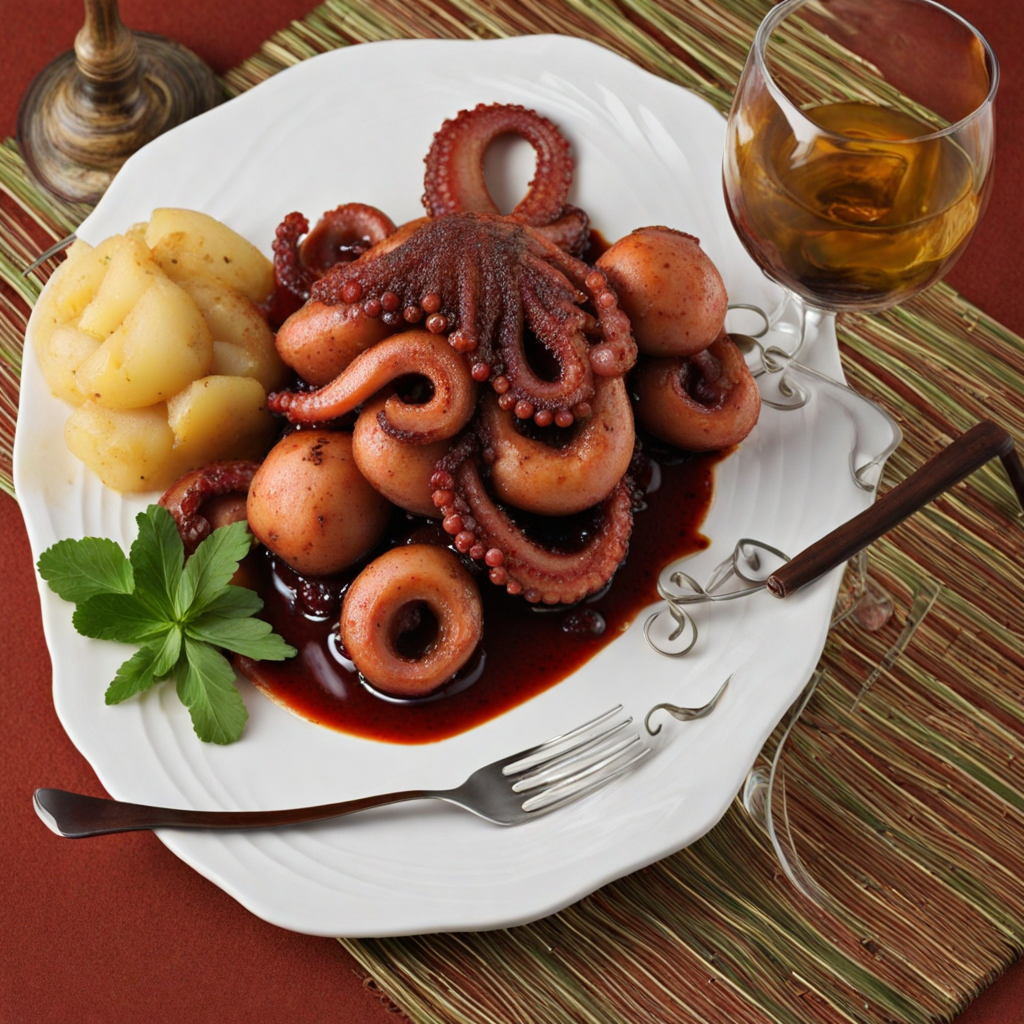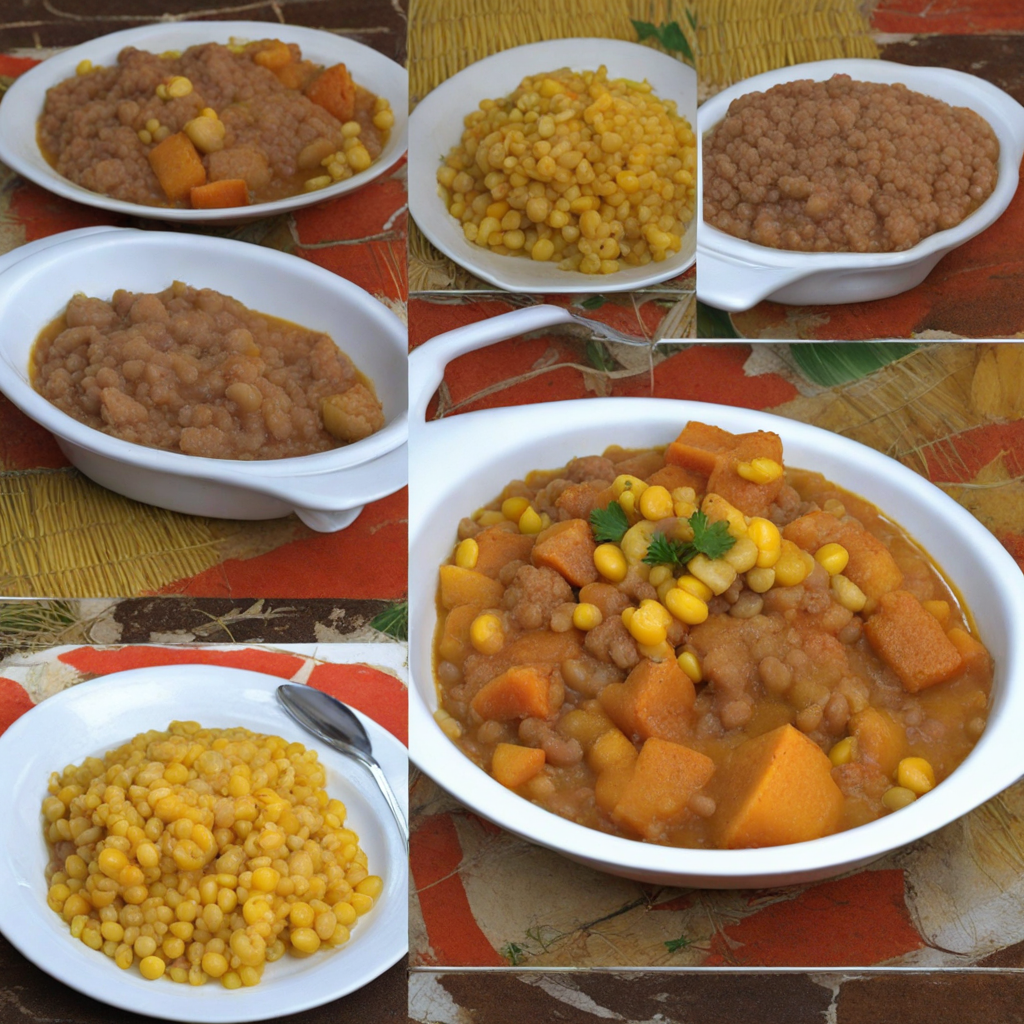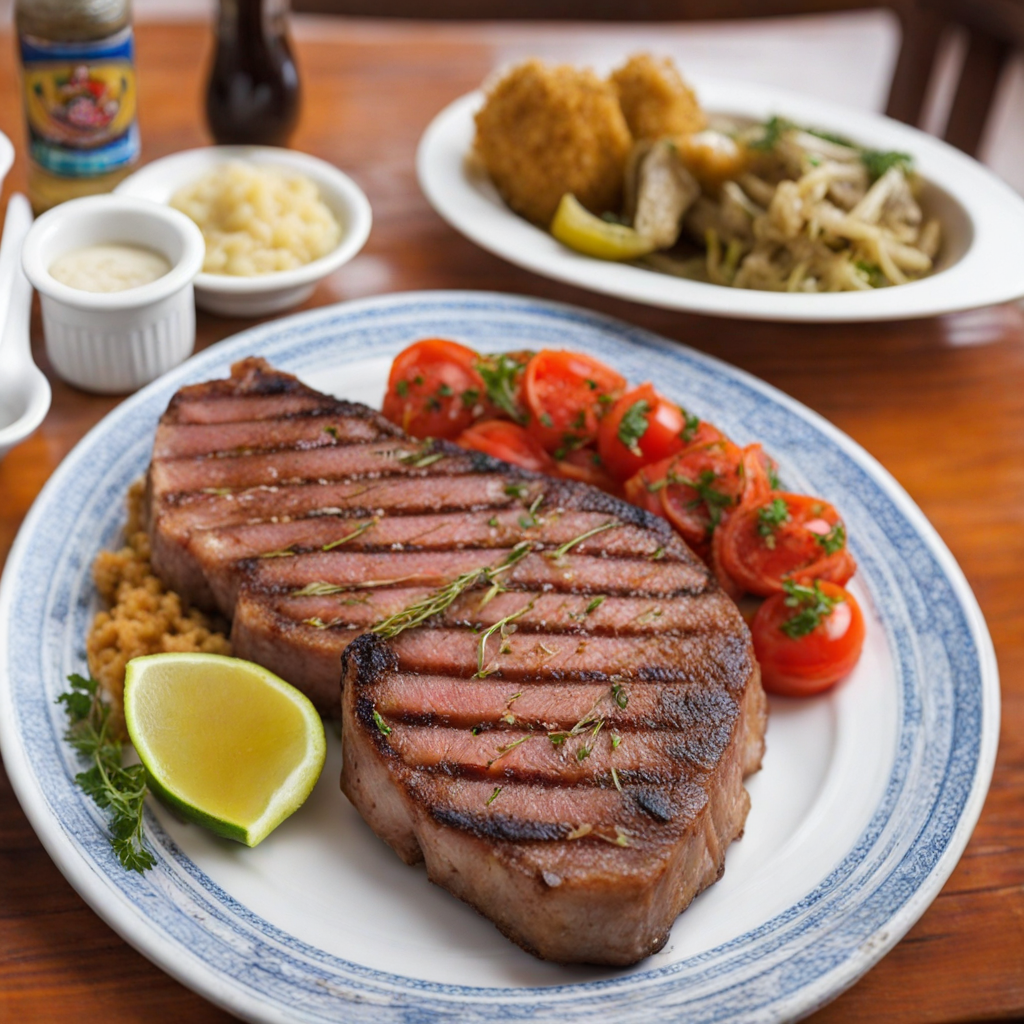Polvo com molho de vinho
Polvo com molho de vinho is a delightful dish from Cape Verde that showcases the island's rich culinary heritage. At its core, this dish features tender octopus, which is a staple seafood ingredient in Cape Verdean cuisine. The octopus is typically simmered to perfection, resulting in a succulent texture that easily absorbs the vibrant flavors of the accompanying sauce. The cooking process often involves marinating the octopus in a blend of spices, which may include garlic, onion, and local herbs, ensuring that each bite is bursting with flavor. The sauce, or "molho," is where the magic truly happens. Made with a base of red wine, the sauce is both rich and complex, adding depth to the dish. The wine melds beautifully with the sautéed onions and garlic, creating a luscious coating that clings to the octopus. Some variations might introduce additional elements like tomatoes or bell peppers, enhancing the sauce's color and flavor profile. The result is a harmonious balance between the ocean's bounty and the earthiness of the wine, making every mouthful a celebration of taste. Served alongside traditional sides such as rice or boiled potatoes, Polvo com molho de vinho is not just a meal; it's a culinary experience that reflects the vibrant culture of Cape Verde. The dish invites you to savor the interplay of flavors while enjoying the warmth of Cape Verdean hospitality. Whether you're a seafood aficionado or simply looking to explore new tastes, this dish promises to transport your taste buds to the sunny shores of the Cape Verde islands.
How It Became This Dish
The History of Polvo com Molho de Vinho: A Culinary Treasure of Cape Verde Cape Verde, an archipelago located off the northwest coast of Africa, is renowned for its rich cultural tapestry woven from the influences of African, Portuguese, and indigenous traditions. Among its culinary jewels is a dish known as "Polvo com Molho de Vinho," or octopus in wine sauce. This dish not only delights the palate but also tells a story of the islands’ history, geography, and cultural evolution. #### Origins: A Convergence of Cultures The origins of "Polvo com Molho de Vinho" can be traced back to the 15th century, coinciding with the Portuguese discovery of the Cape Verde islands in 1460. The islands were uninhabited at the time, but the Portuguese established them as a crucial stopover for ships traveling to the Americas and the East Indies. This maritime hub facilitated the exchange of goods, ideas, and culinary practices, effectively creating a melting pot of cultures. The Portuguese influence is evident in the dish’s use of wine, a staple in Portuguese cooking. They brought viniculture to the islands, and even though Cape Verde’s arid climate limits grape cultivation, wine became an integral part of the local cuisine. Meanwhile, the indigenous population, primarily composed of African ethnic groups, contributed their knowledge of local ingredients, cooking techniques, and flavors. The combination of these influences resulted in a unique gastronomic identity for Cape Verde. Octopus, or polvo, is abundant in the waters surrounding Cape Verde, making it a natural choice for local cuisine. The islands' fishermen have long relied on octopus as a source of sustenance, employing traditional fishing methods that reflect their deep connection to the sea. The blending of Portuguese culinary techniques with local ingredients created the foundation for Polvo com Molho de Vinho. #### Cultural Significance "Polvo com Molho de Vinho" is more than just a dish; it embodies the spirit of Cape Verdean culture. It is often served at family gatherings, celebrations, and communal feasts, signifying unity and shared heritage. The dish is particularly popular during festivals and special occasions, where it serves as a symbol of hospitality and generosity. In Cape Verdean society, food has a vital role in social interactions and cultural identity. The preparation and enjoyment of meals are communal activities that reinforce familial bonds and community ties. When "Polvo com Molho de Vinho" is served, it often accompanies stories of the sea, family legends, and the collective history of the islands. The dish, therefore, acts as a conduit for cultural storytelling, connecting generations through shared culinary experiences. The significance of octopus in Cape Verdean culture goes beyond mere sustenance. It is often associated with resilience and adaptability, reflecting the islands' history of overcoming adversities. The harsh environmental conditions, including droughts and limited resources, have shaped the Cape Verdean people into a community that values resourcefulness. The octopus, a creature that thrives in the changing tides, symbolizes this spirit of resilience. #### Development Over Time As Cape Verde evolved, so too did its culinary practices. The 19th and 20th centuries saw significant social and economic changes, including increased emigration to the Americas and Europe. This diaspora played a crucial role in shaping the identity of Cape Verdean cuisine, introducing new flavors and cooking techniques. Cape Verdeans living abroad often sought to recreate the tastes of home, leading to the adaptation and evolution of traditional dishes, including Polvo com Molho de Vinho. The recipe for Polvo com Molho de Vinho typically includes octopus, garlic, onions, tomatoes, and a generous splash of red wine. While the core ingredients have remained consistent, variations have emerged based on regional availability and personal preferences. Some cooks add spices like paprika or piri-piri for an extra kick, while others might incorporate local vegetables or herbs. This adaptability reflects the broader trends of Cape Verdean cooking, where traditional recipes are often modified to suit contemporary tastes and ingredients. In recent decades, as Cape Verde gained independence from Portugal in 1975, there has been a renewed interest in preserving and celebrating traditional cuisine. Culinary tourism has also played a role in highlighting Cape Verdean dishes on the global stage. Restaurants and chefs are increasingly showcasing authentic Cape Verdean recipes, including Polvo com Molho de Vinho, to both locals and tourists eager to experience the islands' culinary heritage. The rise of social media has further amplified this trend, allowing Cape Verdeans to share their culinary creations and stories with a broader audience. Food blogs, Instagram accounts, and cooking shows featuring Cape Verdean cuisine have contributed to a renaissance of interest in dishes like Polvo com Molho de Vinho. This resurgence not only honors the past but also ensures that future generations will continue to enjoy and cherish their culinary heritage. #### Conclusion: A Dish with a Legacy "Polvo com Molho de Vinho" is more than a meal; it is a reflection of Cape Verde's history, culture, and community. From its origins as a fusion of Portuguese and African influences to its place in modern culinary discourse, this dish encapsulates the resilience and adaptability of the Cape Verdean people. It serves as a reminder of the islands' rich maritime heritage and the importance of food in fostering connections among individuals and communities. As Cape Verde continues to navigate the complexities of globalization and cultural exchange, dishes like Polvo com Molho de Vinho will undoubtedly remain a vital part of its culinary landscape. They are not only a source of nourishment but also a means of preserving identity, celebrating history, and forging connections across generations. In every bite of this savory octopus dish, one can taste the story of Cape Verde—a tale of culture, resilience, and the enduring power of food.
You may like
Discover local flavors from Cape Verde







